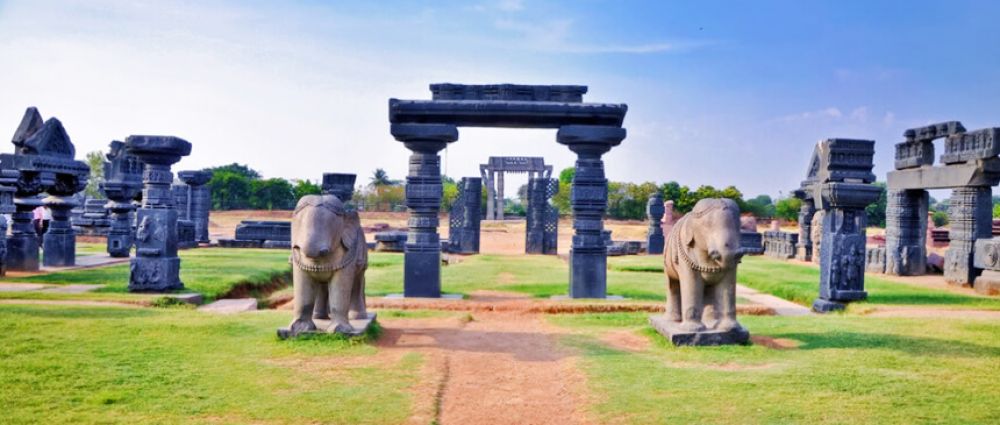

Warangal Fort, in the heart of Telangana, India, stands as a testimony to the architectural prowess and the grandeur of the Kakatiya dynasty, which ruled over the Deccan plateau from the 12th to the 14th century. The fort has a rich history that has captivated tourists and historians alike for many years.
The fort's origins trace back to the reign of King Ganapathi Deva and later his daughter, Rani Rudrama Devi, one of the few ruling queens in Indian history. It was further expanded by Prataparudra II until the dynasty fell to the Delhi Sultanate. Despite its invasions and subsequent damages, the fort continues to be a monument of pride, showcasing the intricate art and architecture that was prevalent during the Kakatiya period.
Warangal Fort is renowned for its impressive stone gateways called the ‘Kirti Toranas,’ signifying the grandeur of the Kakatiya architecture. These once-majestic gateways leading into the fort are now in a ruined state but remain a popular subject of study for archaeologists and a must-visit for tourists. The sheer size and the carvings on these gateways reflect the skill and the storytelling that went into creating them.
Tourism at Warangal Fort has evolved over the years, with the Government of India and the Telangana State Government making concerted efforts to preserve and promote this historical site. It was with the inclusion of Warangal Fort along with other monuments of the Kakatiya dynasty into the tentative list of UNESCO World Heritage Sites, that a significant increase in tourism was noted.
Museums and visitor centers have been set up to enhance the educational value of the site, providing insights into its rich past and historical significance. Yearly celebrations and festivals around the fort, such as the Warangal Festival, add to its allure, attracting both national and international tourists.
In recent years, there has been a surge in promoting heritage tourism with an emphasis on sustainable practices. Digitalization measures like virtual tours and augmented reality experiences are becoming popular, making Warangal Fort more accessible to a global audience. Additionally, local empowerment via tourism provides visitors with unique handcrafted goods and a taste of regional cuisine, furthering the tourism appeal of Warangal.
Tourists interested in visiting Warangal Fort can explore the site at their own pace or opt for guided tours for a more in-depth understanding. With its nearest airport in Hyderabad, approximately 150 kilometers away, and a well-connected railway and road network, reaching Warangal is convenient for travelers.
Warangal Fort continues to stand tall as a symbol of Telangana's history, drawing visitors from around the world. Its enduring beauty and historical significance make it a cornerstone of the rich cultural tapestry of India. Whether you are a history enthusiast, an architecture aficionado, or simply seeking to explore the wonders of India's past, Warangal Fort is a destination that should not be missed.